iPhone 16 Pro
Everything we know about the iPhone 16 Pro and Pro Max. Coming in September 2024.

The 2024 iPhone 16 Pro and Pro Max
In September 2024, Apple will introduce the iPhone 16 Pro and the iPhone 16 Pro Max, which will be sold alongside the iPhone 16 and iPhone 16 Plus. The "Pro" models are the more expensive devices in Apple's flagship lineup and are typically the first flagship iPhones to get new designs and features.
We're a few months away from the debut of the 2024 iPhones, but as is typical, leakers, analysts, and others with insider information are already sharing details on the new devices.
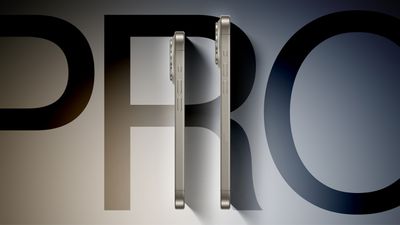
The iPhone 16 Pro and 16 Pro Max will increase in size, and this will be the first size update we've had in several years. The iPhone 16 Pro will measure in at 6.3 inches (up from 6.1), while the Pro Max will measure in at 6.9 inches (up from 6.7). The standard iPhone 16 models will not change in size. Aside from a tweak to the size, we are not expecting major design changes to the iPhone 16 models.
Apple is designing new A-series chips for the iPhone 16 Pro models, built on the latest N3E 3-nanometer node. We could see some improvements to efficiency and performance, but we haven't yet heard details on just what we can expect. The Action Button that was initially limited to the iPhone 15 Pro and iPhone 15 Pro Max will be coming to all four iPhone 16 models, and there's also rumored to be an extra "Capture" button for taking photos and videos.
This roundup includes pre-release rumors about the iPhone 16 Pro models, and there is still time for Apple to change its plans, so information here may shift as Apple updates the design of the upcoming iPhone models.
Note that this roundup focuses on the iPhone 16 Pro and iPhone 16 Pro Max. For an overview of all iPhone 16 models, including the iPhone 16 and iPhone 16 Plus, we have a separate roundup.
Note: See an error in this roundup or want to offer feedback? Send us an email here.
Size Updates and Design Changes
The iPhone 16 Pro and iPhone 16 Pro Max will have larger display sizes, according to multiple sources. The iPhone 16 Pro will have a display that's 6.27 inches in size (rounded to 6.3), while the iPhone 16 Pro Max is expected to have a display that's 6.85 inches in size (rounded to 6.9).
With the larger display size, the dimensions of the iPhone's body will also increase. Both models are expected to be taller and wider than the iPhone 15 Pro models, and while thickness will remain the same, the weight will increase slightly due to the larger size.
iPhone 16 Pro
| iPhone 16 Pro | iPhone 15 Pro | |
|---|---|---|
| Thickness | 8.25 mm | 8.25 mm |
| Height | 149.6 mm | 146.6 mm |
| Width | 71.45 mm | 70.60 mm |
| Display | 6.3" (159.31 mm) | 6.1" (155.38 mm) |
| Screen Border | 1.2 mm | 1.71 mm |
| Weight | 194 grams | 187 grams |
iPhone 16 Pro Max
| iPhone 16 Pro Max | iPhone 15 Pro Max | |
|---|---|---|
| Thickness | 8.26 mm | 8.25 mm |
| Height | 163.0 mm | 159.9 mm |
| Width | 77.58 mm | 76.70 mm |
| Display | 6.9" (174.06 mm) | 6.7" (169.98 mm) | Screen Border | 1.15 mm | 1.55 mm |
| Weight | 225 grams | 221 grams |
Apple could use the dual-ion exchange glass process that it used for the iPhone 15 models for both the iPhone 16 models and the iPhone 16 Pro models. This process gives the rear glass a frosted effect that contrasts with the main frame color.
Dummy Models
Prior to the launch of new iPhone models, case makers source the leaked dimensions and specifications of the upcoming devices from Apple suppliers. The information is used to make dummy models for creating cases, and because there's a lot of money involved in being the first to come out with a case for a new device, dummy models are often accurate representations of what we can expect to see from new iPhones.

iPhone 16 dummy models leaked in April give a clear look at the size differences that we can expect from the iPhone 16 lineup. The Pro models are a bit taller and wider, and the standard iPhone 16 models have a redesigned camera cutout that's vertical instead of diagonal for the two-lens camera system of those iPhones.
There are few changes to the exterior camera design of the iPhone 16 Pro models, with Apple continuing to use a square camera bump that houses the three lenses.
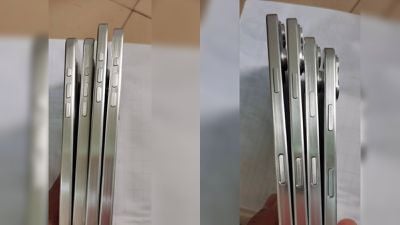
The side left of the dummy models shows the Action Button across all four models, which is in line with rumors. The right side highlights the new Capture Button, which is flush with the side of the device rather than protruding like the volume and power buttons.
Comparison images featuring a dummy model next to an iPhone 15 Pro Max demonstrate just how much bigger the iPhone 16 Pro Max will be compared to the iPhone 15 Pro Max.

MagSafe
The MagSafe alignment magnets in the iPhone 16 models may be slimmer than before, cutting down on the size of the magnetic ring required for MagSafe-compatible cases.

Colors and Finish
The iPhone 16 Pro models are expected to come in black, white or silver, gray or "Natural Titanium," and rose, a shade of gold.
Rumors suggest Apple will eliminate the blue titanium option that it used for the iPhone 15 Pro models and replace it with the rose gold color.
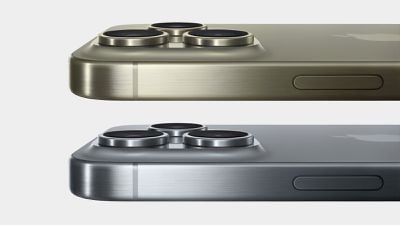
Another rumor suggests that Apple plans to use an improved process for finishing and coloring titanium, which will result in a glossier look than the brushed aluminum finish of the iPhone 15 Pro models. The glossy finish could look much more like the stainless steel that Apple used in prior years, but it will be more resistant to scratches.
Display Technology
The iPhone 16 Pro models may be the first to use Samsung's high performance M14 OLED panel, which is designed to provide superior brightness and longevity. Rumors suggest that the iPhone 16 Pro models will have up to 1,200 nits of typical SDR brightness, up 20 percent over current models, and Samsung's new display technology may be the reason why.
We've also heard rumors that the iPhone 16 models are expected to adopt new micro-lens OLED display technology for improved power brightness and reduced power consumption, which could bring an improvement in battery life, but it is not clear if this is a feature that is provided by the M14 panel from Samsung.
Apple is using Border Reduction Structure (BRS) technology for the iPhone 16 Pro models, which is expected to result in slimmer bezel sizes. BRS allows for a more compact and efficient layout of the circuitry under the display, allowing for thinner bezels without impacting display performance.
Leaker "UniverseIce" claims that the iPhone 16 Pro will have the thinnest bezels of any smartphone, including the Samsung Galaxy S24. The 16 Pro is expected to have 1.2mm bezels, while the 16 Pro Max is expected to have 1.15mm bezels, an improvement over the 1.71/1.55mm bezels of the iPhone 15 Pro and Pro Max.
There could be some minor tweaks to the Face ID system in the iPhone 16 models, but it is not clear what might be different. An Apple supplier in England reportedly lost a supply deal with Apple because Apple has plans to "overhaul" Face ID with the launch of the iPhone 16.
Buttons
The iPhone 16 Pro models are expected to have the same power, volume, and Action buttons as the iPhone 15 Pro models, with no design changes or updates. Apple is planning to add a new button, though, the "Capture Button."
The Capture Button will be located on the same side of the iPhone as the Power button, in the space that is occupied by the 5G mmWave antenna in the United States.
With the addition of this button, the mmWave cutout will be relocated to the left side of the device, below the volume buttons. Like the rest of the iPhone 16 Pro buttons, the Capture Button will be mechanical rather than capacitive, but it will be able to respond to pressure and touch. iPhone users will be able to zoom in and out by swiping left and right on the button, focus with a light press, and activate a recording with a more forceful press.
Detecting multiple levels of pressure will let the Capture Button emulate a two-step shutter button like the button used on digital cameras, providing a function that many users will be familiar with.
The Capture Button will be available on all four iPhone 16 models, and it will be used for taking photos and videos.
The upcoming button changes can be seen in CAD renders, with an added Capture Button on the right side of the device, which is flush with the side. The Action button is depicted as slightly larger, but it is not clear if that is a design option that Apple will stick with.
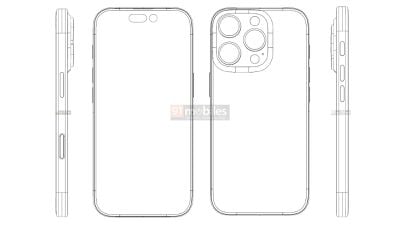
A-Series Chips
Code in iOS 18 confirms that all four iPhone 16 models are set to use the same next-generation A18 chip, but Apple could still differentiate between the iPhone 16 and iPhone 16 Pro. A18 chips with a smaller number of GPU cores (either binned or disabled) could be used for the iPhone 16 models, while chips with a better GPU could be used for the iPhone 16 Pro. The chips could even have different A18 and A18 Pro names.
The next-generation A18 chip could feature an upgraded Neural Engine with "significantly" more cores, allowing for improved AI/machine learning performance. Analyst Jeff Pu believes the chip will feature a larger die size for improved artificial intelligence performance, and the same 6-core GPU in the A17 Pro.
Thermal Improvements
The iPhone 16 models are expected to include a new thermal design that will combat overheating. Apple is said to be working on a graphene thermal system for the iPhone 16 models, and the iPhone 16 Pro models may also include a metal battery casing that will improve heat dissipation.
Graphene has higher thermal conductivity than the copper that's used in iPhone heat sinks.
The iPhone 16 models will include a larger graphite sheet inside to mitigate heat and address potential overheating from the Apple silicon chip.
iPhone 16 Camera Technology
The iPhone 16 Pro models are rumored to include an improved 48-megapixel Ultra Wide camera. The upgrade should allow the sensor to capture more light, resulting in enhanced photos when shooting in 0.5x mode, especially in low-light environments. It would likely function like the 48-megapixel Wide camera, which uses pixel binning to combine the data from four pixels into one "super pixel" for better image quality.
While both of the iPhone 16 Pro models will get a 48-megapixel Ultra Wide camera, the iPhone 16 Pro Max alone will get a larger Main camera sensor based on a custom 48-megapixel Sony IMX903 sensor. The new sensor is expected to use a stacked design for better performance, and Digital Gain Control for better dynamic range and noise control. The smaller iPhone 16 Pro's Main camera is expected to use the same 48-megapixel Sony IMX803 sensor that Apple added to the iPhone 15 Pro models.
Both the iPhone 16 Pro and the iPhone 16 Pro Max are expected to get Tetraprism Telephoto lenses in 2024, instead of the technology being limited to the larger Pro Max. That means both iPhone 16 Pro models will feature at least 5x optical zoom and at least 25x digital zoom, and this is a rumor we've heard echoed several times.
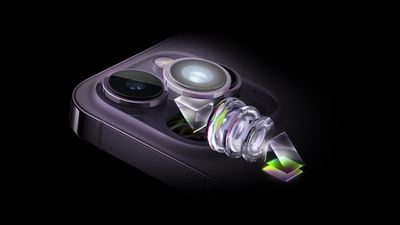
The iPhone 16 Pro cameras could include a new anti-reflective optical coating that would improve photos by cutting down on lens flare and ghosting. Artifacts like streaks of light and halos can appear in photos when bright light sources like the sun shine into the lens, and this is a noted issue on the iPhone 15 Pro cameras.
Super Periscope?
The iPhone 16 Pro Max could feature a super telephoto periscope camera for a dramatically increased optical zoom. The information comes from a Weibo account that has provided accurate information in the past, but it has not yet been backed up by a second reliable source.
"Super" or "ultra" telephoto usually describes cameras with a focal length of over 300mm. The current telephoto lens is equivalent to a 77mm lens, so if accurate, there could be a notable increase in zoom capabilities.
5G Modem Chip
The iPhone 16 Pro models are expected to use Qualcomm's Snapdragon X75 modem, allowing for faster and more efficient 5G connectivity. According to Qualcomm, the X75 offers improved carrier aggregation, plus the combined sub-6Ghz and mmWave 5G transceiver takes up 25 percent less circuit board space and uses up to 20 percent less power.
Qualcomm's X75 supports the "5G Advanced" standard with AI and machine learning enhancements for 5G improvements, so Apple could market the iPhone 16 Pro models as having "5G Advanced" connectivity. Apple is not expected to use the Qualcomm X75 in the standard iPhone 16 models.
Storage
The iPhone 16 Pro models are expected to include up to 1TB of storage space, with Apple also offering 256GB and 512GB models. The 1TB iPhone 16 Pro could feature slower read and write speeds in order to cut down on costs, according to DigiTimes. The site claims that Apple is considering using higher-density Quad-Level Cell (QLC) NAND flash memory, but has not yet made a decision.
There has also been a rumor that the iPhone 16 Pro models could offer up to 2TB of storage space, but this is not yet confirmed.
WiFi 7
Apple analyst Ming-Chi Kuo believes the iPhone 16 Pro models could adopt the next-generation WiFi 7 technology, which is expected to provide speeds of "at least 30" gigabits per second, and could hit up to 40Gb/s.
Wi-Fi 7 is also able to use 320MHz channels and supports 4K quadrature amplitude modulation (QAM) technology, providing up to 2.4x faster speeds than Wi-Fi 6 with the same number of antennas. Wi-Fi 7 will offer faster maximum transfer speeds, lower latency, and more reliable connectivity.
USB-C Port
Apple transitioned to USB-C technology with the iPhone 15 lineup, and all iPhone 16 models will also have USB-C ports.
Battery
Rumors suggest the iPhone 16 Pro models will use stacked battery technology, which can result in higher capacity and a longer lifespan. Stacked batteries are common in electric vehicles and medical devices, but are an emerging technology for smartphones.
The iPhone 16 Pro will support 40W wired charging and 20W MagSafe charging, according to a rumor out of China. As of right now, the iPhone models support up to 27W wired charging and 15W MagSafe charging. It is not yet clear if the rumor is accurate.
The iPhone 16 Pro battery is expected to have an updated stainless steel casing that allows for higher energy density, ultimately bringing a density increase of up to 10 percent. That could lead to longer battery life.
EU law requires smartphone manufacturers create batteries that can be replaced by owners using easily accessible tools, and Apple will need to implement support by 2025. Apple is planning to adopt a new battery replacement method for at least one iPhone 16 model, encasing the battery in metal rather than foil. With a low volt of electricity, the battery will be able to removed from the chassis, which would eliminate the need for adhesive and ease repairs.
Leaked battery information indicates that most of the iPhone 16 models will see a small increase in battery life, if that info is correct.
| iPhone 15 Lineup (2023) | iPhone 16 Lineup (2024) | % Change | |
|---|---|---|---|
| [Standard] | 3,349 mAh | 3,561 mAh | +6% |
| Plus | 4,383 mAh | 4,006 mAh | -9% |
| Pro | 3,274 mAh | 3,355 mAh | +2.5 |
| Pro Max | 4,422 mAh | 4,676 mAh | +5% |
AI Capabilities
With iOS 18, Apple is rumored to be introducing new Siri features powered by large language models, and some of the cutting-edge generative AI features could be limited to the iPhone 16 models.
According to details shared by a leaker, iOS 18 will bring many of the new LLM features to all iPhones, but on-device AI features could remain exclusive to the iPhone 16. iOS 18's updated AI functionality could include improved interactions between Siri and the Messages app, auto-generated Apple Music playlists, integration with productivity apps for AI-assisted content creation, and more.
Microphone
The iPhone 16 models are expected to feature an improved microphone that will accompanying the AI-enhanced Siri experience. The microphone will have improved water resistance and a better signal-to-noise ratio that will"improve the Siri experience significantly," according to Apple analyst Ming-Chi Kuo. The new microphone is also expected to be able to better hear the user's commands.
iPhone 16 Ultra?
There have been some mixed rumors of an "iPhone Ultra" that could be in the iPhone 16 lineup, either as a fifth even higher-end phone or as a replacement for the iPhone 16 Pro Max.
Bloomberg's Mark Gurman said in February 2023 that Apple is considering an "Ultra" iPhone that could come out in 2024, but based on current rumors, it is unclear if that's still the case. There are no rumored features that would distinguish an "Ultra" phone from the rest of the iPhone lineup. In early iOS 18 code, there are no signs that Apple is working on an iPhone 16 Ultra.
Pricing
Component prices for the standard iPhone 15 models were at a record high, up 16 percent compared to the iPhone 14 models. Apple absorbed the increased production costs for much of the iPhone 15 lineup, but Apple may need to increase the price when the iPhone 16 launches to avoid impacting overall revenue. We have not heard continued rumors of price increases, however, so as of this point we are expecting the iPhone 16 Pro models to cost the same as the iPhone 15 Pro models.
iPhone 16 Pro Launch Date
The iPhone 16 Pro models are expected to come out in September 2024.
Future iPhone Features
ProMotion technology that adds up to 120Hz refresh rates to the iPhone's display is expected to come to standard iPhone models starting in 2025. Up until 2025, ProMotion will be limited to the higher-end "Pro" iPhones.
The iPhone 17 Pro Max that's coming in 2025 could feature a 48-megapixel Telephoto lens that is optimized for the Vision Pro headset. The rumor comes from analyst Jeff Pu, who did not provide details on how it might interface with the Vision Pro. Pu also believes the iPhone 17 Pro will include an Apple-designed Wi-Fi 7 chip.
There were rumors that the iPhone 16 Pro models could adopt under-display Face ID technology, but updated information suggests that under-display Face ID will not be coming until 2025 or later. Under display Face ID will allow for more usable display space as there will be no need for the full Dynamic Island, but there will still be a camera cutout.
The 2025 iPhone 17 is expected to include an upgraded 24-megapixel front-facing camera that will significantly improve image quality and low-light performance.
With the 2026 iPhone 18, Apple will reportedly have both under-display Face ID and under-display front-facing camera technology, potentially allowing for a design that has no cutouts for the camera hardware. This would mark the first all-display design.
iPhone 16 Pro Roundup Changelog
- July 24 - Updated with info on thermal design.
- July 16 - Added new color information.
- July 15 - Refreshed with new charging rumors.
- July 9 - Added new A18 and Face ID rumors.
- July 1 - Updated display and battery rumors.
- June 5 - Updated iPhone 16 Pro dimensions.
- June 3 - Added a rumor about display bezels.
- May 30 - Refreshed wording, added display rumors.
- May 21 - Updated rumors about new camera technology.
- May 20 - Added new info on color options.
- May 17 - Added an iPhone 16 Pro Max size comparison image and battery info.
- May 15 - Included new display brightness rumor.
- May 3 - Updated with rumor about thinner magnetic ring for MagSafe.
- May 1 - Updated design info with back glass rumor.

